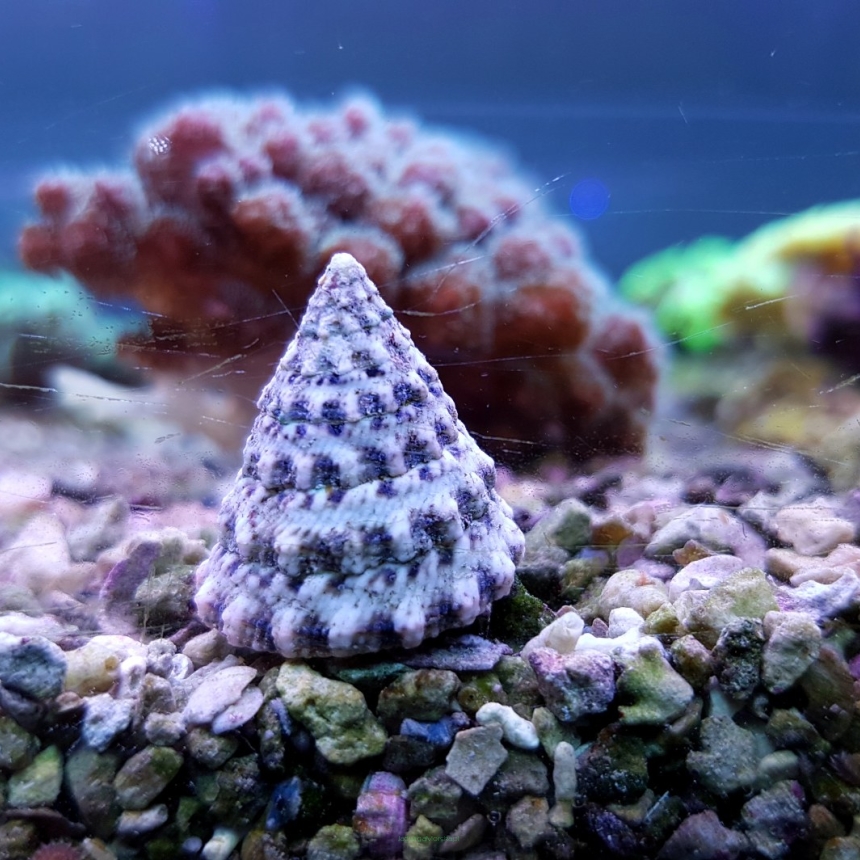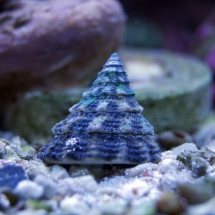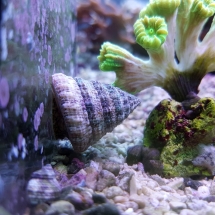



Tectus fenestratus, also known as the "Black Tectus Snail" or "Black Margarita Snail," is a species of marine snail from the Tegulidae family. Here is a general description of this species and information about its cultivation:
Description of Tectus fenestratus:
Appearance: Tectus fenestratus has a conical body and a distinctive black or dark brown shell with an elongated shape. Some individuals may have subtle white patterns on the shell. Their legs and antennae are typically lighter in color compared to the shell.
Size: Individuals of this species typically reach a shell length of several to several dozen centimeters.
Behavior: Tectus fenestratus is a herbivorous snail that feeds on algae and biofilms growing on coral reefs and underwater rocks. In the aquarium, it is active and can help maintain cleanliness on the underwater substrate.
Cultivation of Tectus fenestratus in marine aquariums:
Aquarium: An aquarium intended for the cultivation of Tectus fenestratus should have an adequate amount of substrate on which the snail can move and feed on algae. It is also important to provide a sufficient amount of rocks and coral reefs, which serve as natural food and shelter.
Water Parameters: Maintaining stable water parameters is crucial. The water in the aquarium should have a temperature in the range of 24-28°C (75-82°F) and an appropriate salinity level, typically between 1.023 and 1.025. Good water filtration and regular water changes are important.
Feeding: Tectus fenestratus is a herbivorous snail that feeds on algae and biofilms. In the aquarium, it can be fed with various food sources such as nori algae, spirulina, or specially prepared herbivorous snail food.
Cultivating Tectus fenestratus in marine aquariums is relatively straightforward because they are herbivores that help maintain a healthy aquarium environment. Providing suitable environmental conditions and access to food are key aspects of keeping these snails in the aquarium.